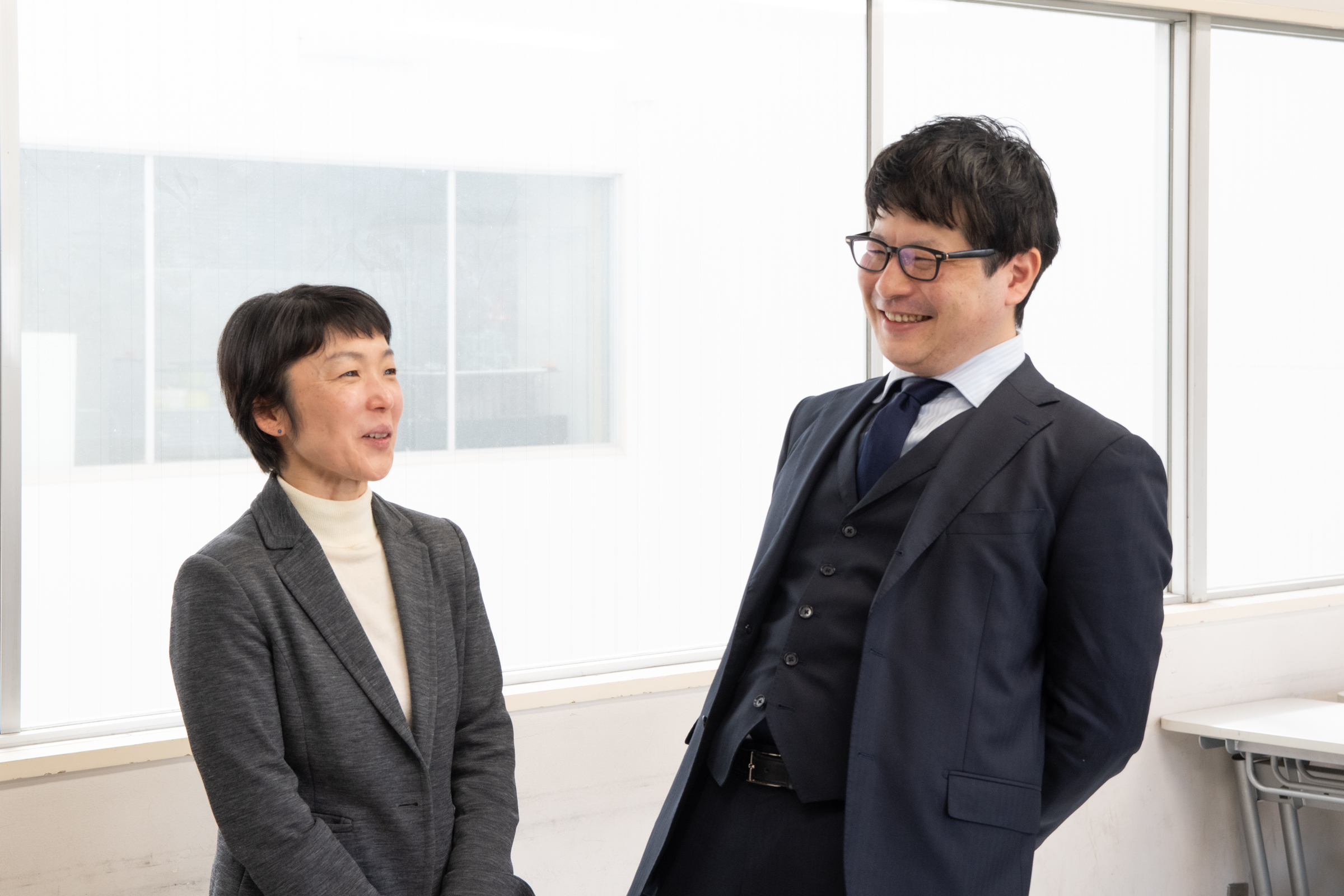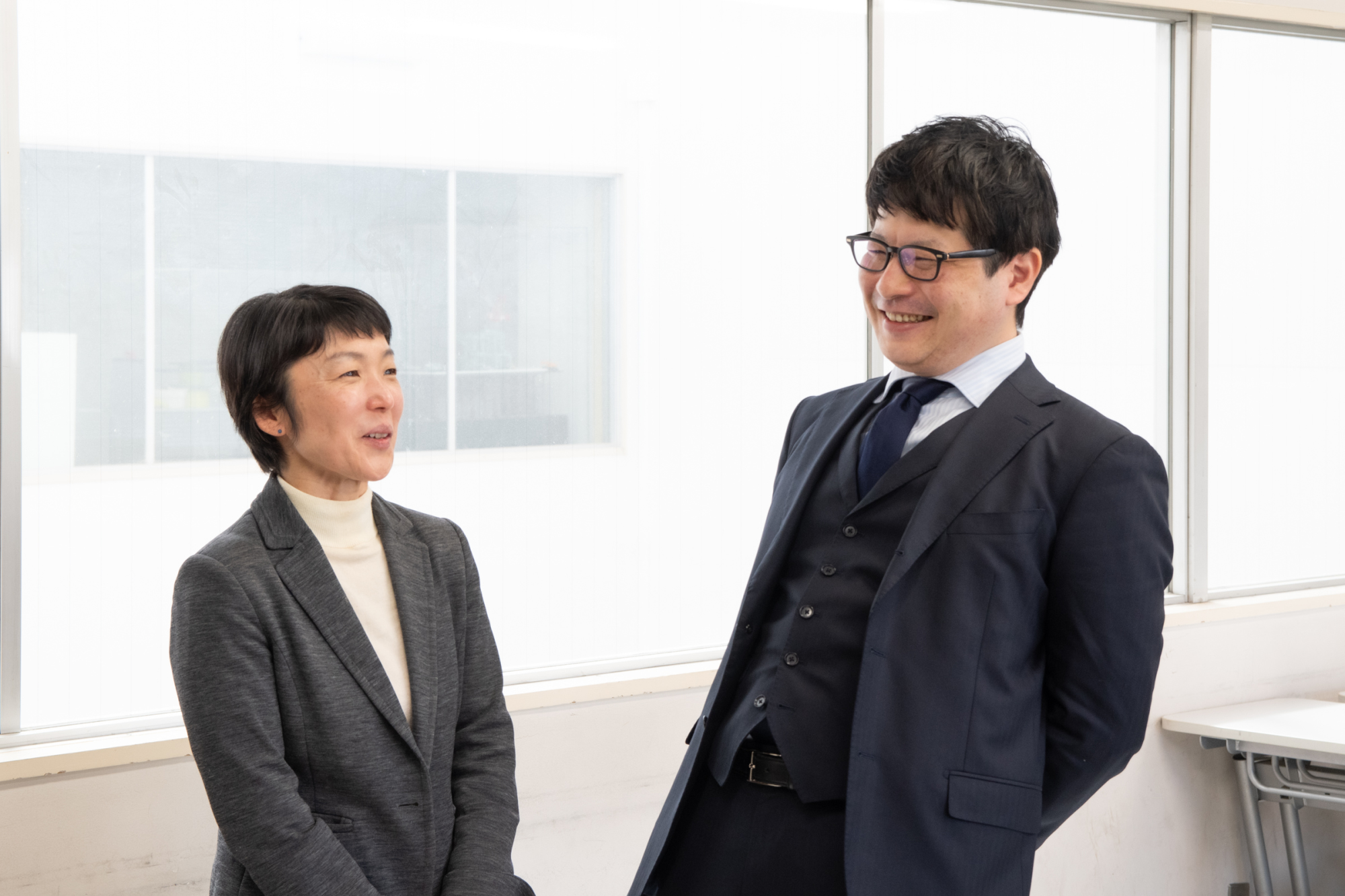
CEMENON is a geopolymer concrete developed by the IHI Group jointly with Yokohama National University and ADVAN ENG Co., Ltd., which a company specializes in the design and fabrication of industrial furnaces and waste treatment plants. Professor Chikako Fujiyama of Yokohama National University is one of the key persons in its developmentwho made its development possible.

As a concrete engineering expert, Prof. Fujiyama specializes mainly in research on concrete material for bridges. The IHI Group has benefited greatly from her advice on it such as concrete composite structures. We asked Prof. Fujiyama to participate in this project because her research on materials covers geopolymers.
The reason Prof. Fujiyama started research on geopolymers dates back to the days when she was a graduate student. An Indonesian student in the same laboratory was doing research to find ways to utilize a large amount of mud erupted from a mud volcano near her hometown. By analyzing the composition of the mud, he had already reached the conclusion that the mud can be used as a geopolymer material.

“At that time, I hadn’t done any research on materials yet. So, at first, I was just listening to what he said as one of his friends, but when I started my own laboratory, we decided to do research together.” They collected mud samples in Indonesia and started our research. However, because the amount of mud we could bring to Japan was limited, we continued geopolymer research by using fly ash, which is easier to obtain in Japan.
While continuing our research, they found that there were many students who are interested in geopolymers from the viewpoint of CO2 reduction. “Now, there are more students who say that if I’m doing such research, then they want to do it together, rather than focusing on bridges or structures. Carbon dioxide reduction and carbon neutrality are drawing attention on a global scale, and they are topics that foreign students are also interested in. There are even some students who write only about their passion for such research instead of about the research itself. Sometimes I even need to tell them to write about research instead of their passion,” smiles Prof. Fujiyama. “It means, however, that geopolymer is a very interesting topic to young students.”

On the other hand, Prof. Fujiyama herself sees the potential of geopolymers because various raw materials that are currently left unused in the world might be put to practical use. “One advantage of geopolymers is that not only the Indonesian mud that enabled us to start our research but also various other things in the world could be utilized. Those things may include burnt oil palm residues, burnt rice husks, and, needless to say, fly ash. The advantage is that those local materials can be utilized, and concrete can be produced from waste material, and at the same time CO2 emissions can be reduced.”
Prof. Fujiyama continues, “CEMENON, which we have finally managed to launch as a new material, can be used without any problems in terms of structural performance. We already know from the data on other geopolymer concretes that geopolymer concrete has sufficient strength. Detailed data are also available regarding other performance attributes such as shrinkage and bond strength, and we are under the impression that geopolymer concrete is easy to use.” She also says, “High acid resistance is an obvious advantage. This is general characteristic of all geopolymers, but it should be particularly pronounced for CEMENON.”

Tomoaki Kisaku, CEMENON development leader in Product and Process Innovation Group, Engineering Department, Integrated Development Center, Corporate Research & Development Division, IHI, explains, “CEMENON is a pure geopolymer concrete, and that’s why we can recommend it with confidence.” Unlike alkali-activated materials (AAM) that also contain non-geopolymer ingredients, CEMENON can be said to be a pure geopolymer that contains almost no such additives, and that’s why it has high acid resistance.
Prof. Fujiyama declares with confidence, “It is common practice to add supplementary materials to achieve high early strength. CEMENON is a highly reliable material partly because performance requirements can be met by taking advantage of the mechanism of a pure geopolymerization without the use of supplementary materials and partly because high-quality active filler is used.”
Kisaku expresses heartfelt appreciation for such evaluations and advice. “Working alone without expert advice, we tend to have misconceptions and think too narrowly. Comments from Prof. Fujiyama help us notice problems, misconceptions and additional requirements, so that we can move on to the next steps in experiments. Thus, we can create a good cycle.”

For example, Prof. Fujiyama thought that the failure mode of geopolymer concrete differs from that of cement concrete was another important point. “Needless to say, there is no structural problem with geopolymer concrete in that load-bearing beams can be constructed by placing reinforcing bars. Personally, I’m interested in geopolymer concrete as a structural material because deformation and cracking occur differently from conventional concrete,” says Prof. Fujiyama.
From those viewpoints, Ms. Sei Jo, Material and Structural Engineering Department, Technology Platform Center, Corporate Research & Development Division says that she also made some findings. “Basic properties of geopolymer concrete had been largely unknown. If we applied analytical models developed for conventional concrete without making any modifications, we obtained analytical results that differed from experimental results. We had to identify those differences and conduct experiments under the guidance of Prof. Fujiyama. They were very challenging experiments, but they gradually revealed that both mechanical and chemical properties of geopolymer concrete were completely different,” recollects Ms. Jo.

What did Prof. Fujiyama think of the CEMENON development team that was tackling the challenging task of exploring an unknown field? Referring to their relationship, she admits, “When I told them what I had in mind, they immediately set up experiments and reported the obtained results. They were really efficient. Not only were all the members highly motivated, but also highly skilled and competent. I was also impressed that they all got along well with each other. There was no impression of a top-down hierarchy, and young members looked full of energy. I guess a relationship like that facilitates exchanging views and ideas.”
She continues, “I had the impression that this harmonious relationship existed not only among people in the company or in the group but also with ADVAN ENG people.” Having seen some cases where many people in many different positions become unable to work efficiently and things become so chaotic that nothing can get done, Fujiyama points out that increasing diversity does not necessarily work, saying that it is important to create an environment or relationship that effectively uses such diversity.
Kisaku replies, “I think it was important to assure them at the outset, taking into consideration the viewpoint of the partner company, that the project would not only profit IHI but also generate future profits for them. It was through such confidence-building efforts, including heated discussions and conflicts, that made it possible to work harmoniously.”
He also mentions the confidence he places in the partner company. “It is practically impossible to master both materials and structures. So, the initial proportioning of materials is absolutely the task to be performed by ADVAN ENG, and the task to be performed by the IHI Group is to use the obtained results with confidence so as to create structures. The two companies are doing things they are good at so as to leverage their strengths. I think that’s why we are good partners.”
If a joint development project is to be successfully completed with companies and experts who have specialized knowledge or technology that you do not have, in order to realize a sustainable society, it is important to create an environment where team members can share thoughts, perform what each member is good at, and exchange views and ideas while respecting one another. The development of CEMENON was successful in terms of the results achieved, but the development process itself was also a reward in its own right.

Special thanks:
Chikako Fujiyama|Professor of Faculty of Urban Innovation, Division of Urban Innovation, Yokohama National University
ADVAN ENG Co., Ltd.| https://www.adv-eng.co.jp/
Tomoaki Kisaku|Product and Process Innovation Group, Engineering Department, Integrated Development Center, Corporate Research & Development Division (At the time of the interview)
Sei Jo|Material and Structural Engineering Department, Technology Platform Center, Corporate Research & Development Division
Yuki Yoshida | Material and Structural Technology Department, Technology Platform Center, Corporate Research & Development Division (At the time of the interview)



